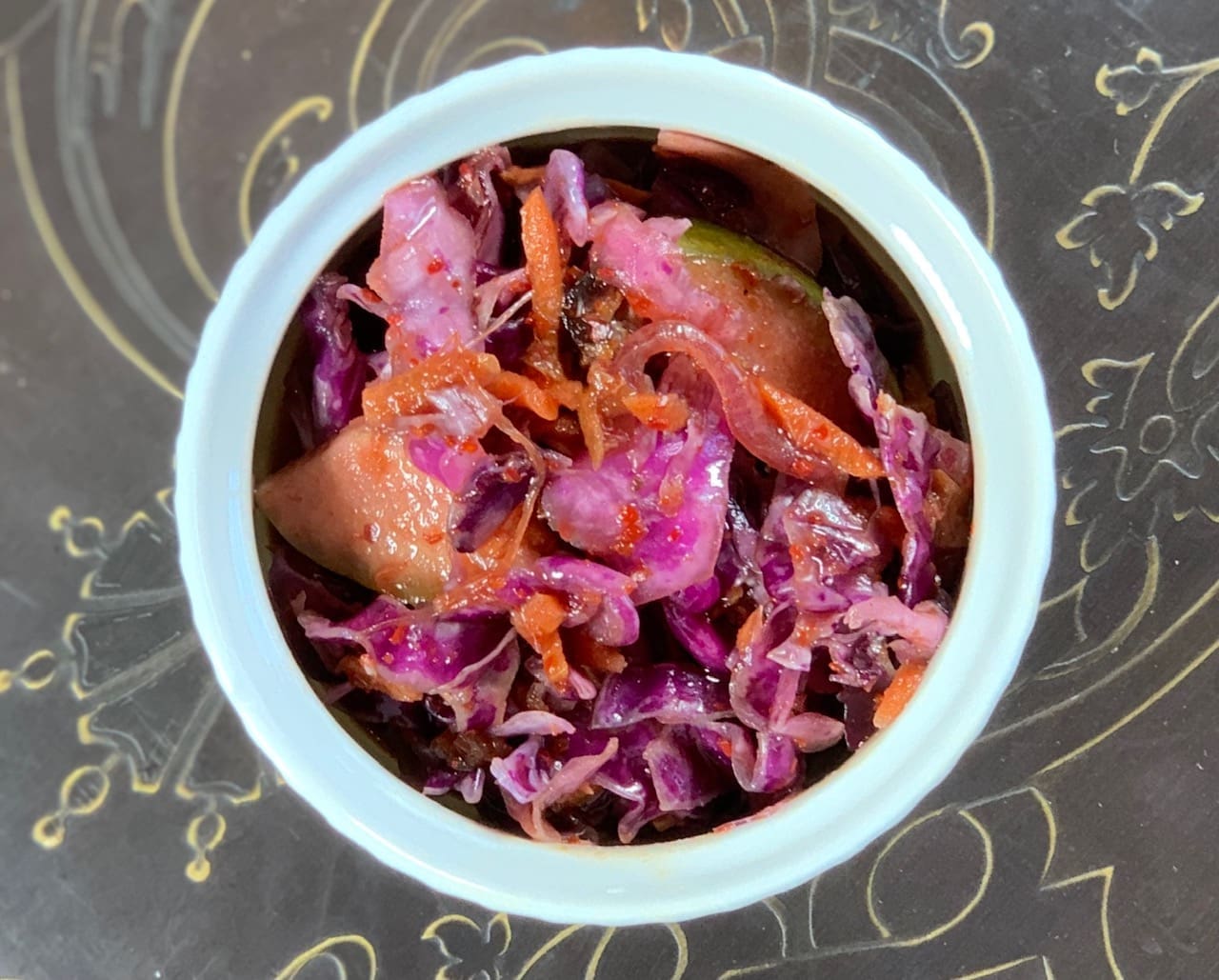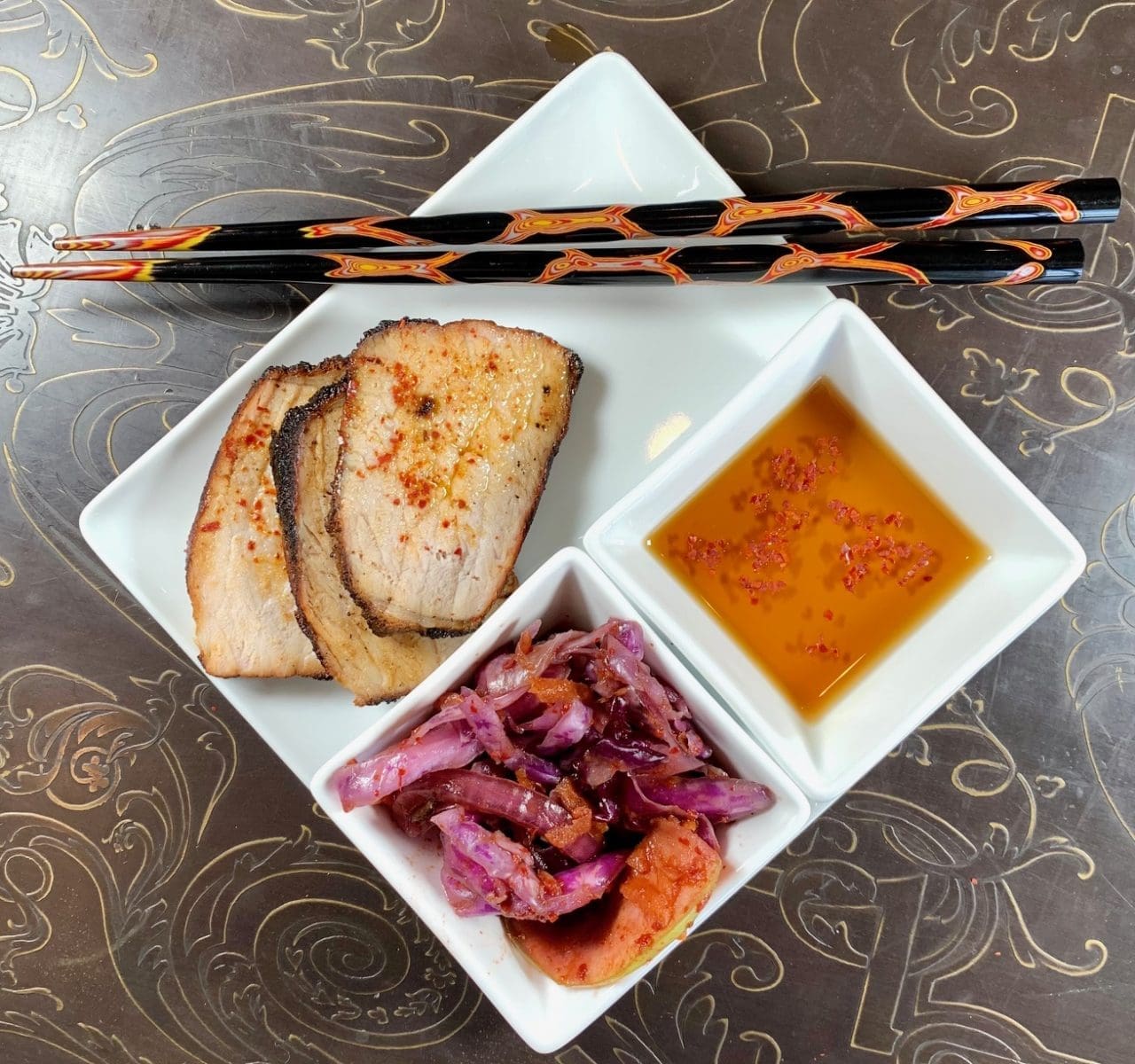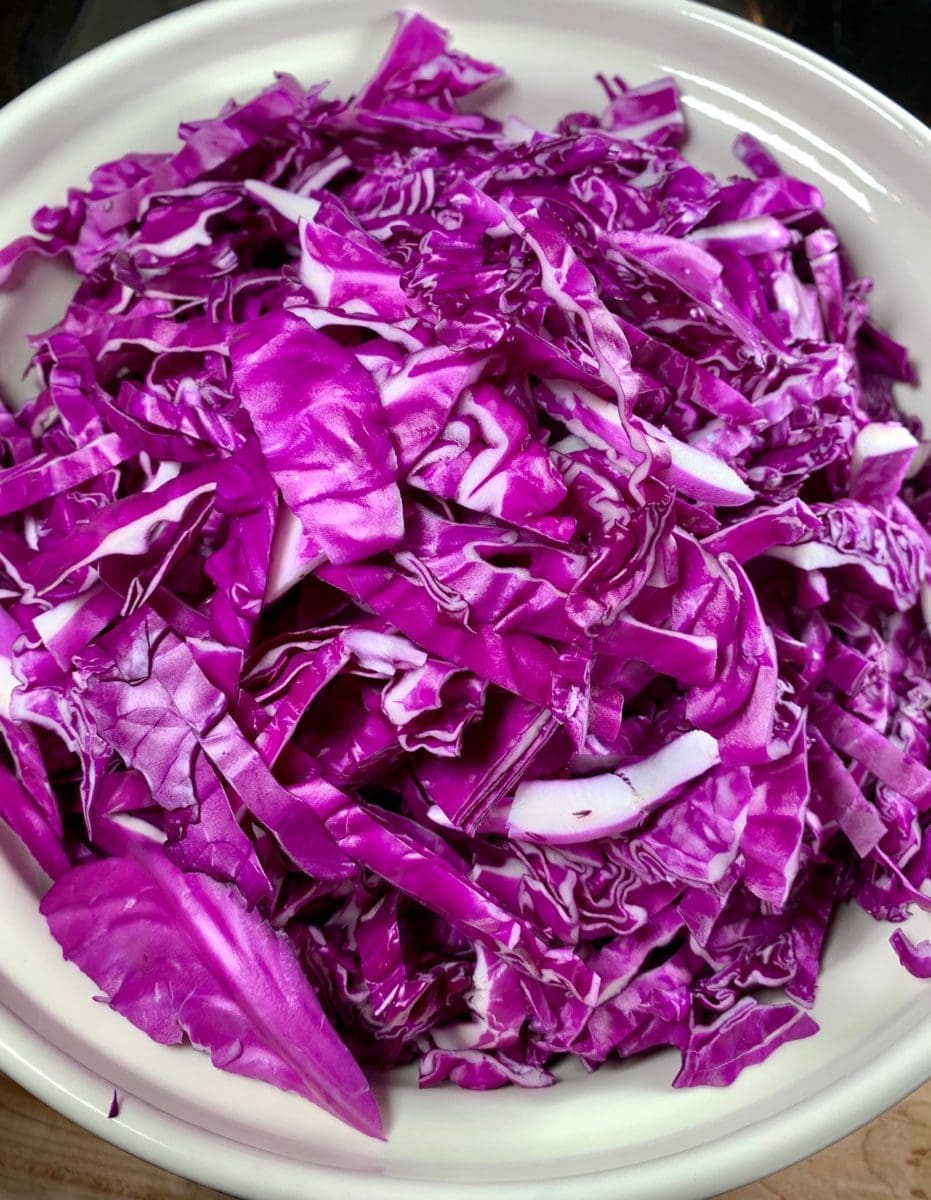
Winter Red Kimchi: A Fermented Bridge Between Cultures
Winter Red Kimchi brought me full circle—from 1970 to the present, when I finally understand what my Vietnamese neighbor was doing all those years ago. I watched her quietly bury large jars in the backyard, sometimes for just a few days, sometimes for weeks. We couldn’t speak to each other—she knew no English, and I knew no Vietnamese—but her husband, a war veteran, once explained that she was making kimchi. At the time, I had no idea what that truly meant. Now, I do.
Kimchi, in many ways, reminds me of the Southern coleslaw I grew up with. The essential side dish, tangy and crisp, served alongside everything from pulled pork to fried chicken. But while coleslaw is quick and creamy, kimchi leans into patience and chemistry. Instead of mayonnaise, it uses salt, sugar, fish sauce, and the quiet magic of fermentation to transform simple cabbage into something electric and alive.

New Techniques
This was my first time fermenting anything other than whisky sour mash, and I’ll admit—it was a bit daunting. There were new ingredients to explore, like gochugaru, the Korean red pepper flakes that define kimchi’s personality. Far from fiery, gochugaru is a revelation: smoky, sweet, and gently warming, with a complexity that’s utterly addictive.
It’s a vibrant side for everything from roast pork to crispy fried chicken—dishes familiar to the Southern table. Yet it also stands confidently on its own. I often find myself eating it straight from the jar, relishing its crunch and depth, its earthiness and bright acidity.
Making Winter Red Kimchi
The original recipe from Ed Lee created a boatload of kimchi—far more than I anticipated. About a gallon, to be exact. Midway through, I found myself scrambling for larger bowls. I’ve since adjusted the quantities to yield a generous half-gallon, which is plenty for sharing… or hoarding for yourself.
Winter Red Kimchi isn’t just another dish. It’s a conversation between cultures, between past and present, between the familiar and the unknown. And like all the best conversations, it lingers long after the last bite.

Place the cabbage in a large bowl, sprinkle and toss thoroughly with the salt and let set for 40 minutes. While resting the cabbage, make the paste. Place the water, rice flour and sugar in a saucepan and bring to a simmer and stir constantly until the mixture thickens into a paste about 1-2 minutes. Remove the paste from heat and let it cool.

Drain and rinse the cabbage and return it to the giant bowl. Add the red onions, carrots, green apples, chili flakes, fish sauce, garlic and ginger to the cabbage and mix by hand using clean latex gloves.
Fold in the paste mixture and bacon into the cabbage. Mix everything thoroughly into the cabbage by hand to create the kimchi.
Transfer the kimchi to an airtight glass jar or plastic container, let it stand at room temperature for 24 hours, then refrigerate. Wait 4-5 days for it to complete fermentation. Store refrigerated for up to two weeks

Winter Red Kimchi
Korean style fermented cabbage, carrot, apple and onion with garlic, fish sauce and gochugaru
- Prep Time: 15
- Cook Time: 60
- Total Time: 1 hour 15 minutes
- Yield: 1/2 Gallon 1x
Ingredients
Cabbage
- 1 large red cabbage – about 2.5 pounds – shredded
- 1/4 cup kosher salt
Paste
- 1–1/2 cups water
- 1/4 cup sweet (glutinous) rice flour
- 1/8 cup sugar
Guts
- 1 small red onion – thinly sliced
- 6 oz carrot – grated with large holes in a food processor
- 1–1/2 green apples, cored and thinly sliced into 1/2”-3/4” strips
- 2 cloves garlic – micro-planed
- 1/4 cup Korean Gochugaru chili flakes (not powder)
- 1/4 cup fish sauce
- 1 oz fresh ginger – micro-planed
- 2 strips bacon – fried crisp, drained and crumbled
Instructions
- Place the cabbage in a large bowl, sprinkle and toss thoroughly with the salt and let set for 40 minutes
- While resting the cabbage, make the paste. Place the water, rice flour and sugar in a saucepan and bring to a simmer and stir constantly until the mixture thickens into a paste about 1-2 minutes. Remove the paste from heat and let it cool
- Drain and rinse the cabbage and return it to the giant bowl. Add the red onions, carrots, green apples, chili flakes, fish sauce, garlic and ginger to the cabbage and mix by hand using clean latex gloves
- Fold in the paste mixture and bacon into the cabbage. Mix everything thoroughly into the cabbage by hand to create the kimchi
- Transfer the kimchi to an airtight glass jar or plastic container, let it stand at room temperature for 24 hours, then refrigerate
- Wait 4-5 days for it to complete fermentation. Store refrigerated for up to two weeks
Notes
Courtesy of Chef Edward Lee of Louisville, Kentucky from his best-selling cookbook Smoke & Pickles – Recipes From A New Southern Kitchen, 2013.
